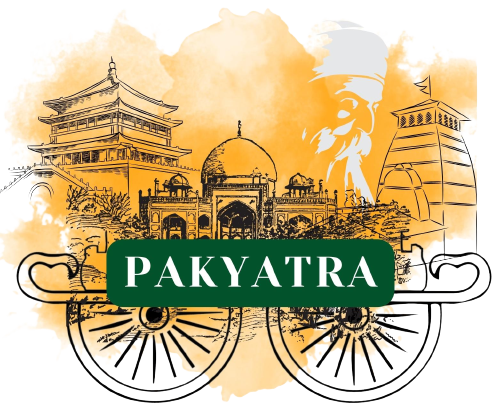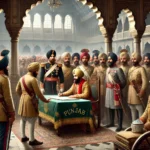PAK YATRA is a tour operator company providing tour services and facilitates Sikh community from different parts of the world.
Pernami Mandir
In a small town called Tehsil Malika Hans, situated between Sahiwal and Pakpattan, there is a stunning temple that remains a well-kept secret. People often call it the “Parnaami Mandir,” and it’s a reminder of a glorious past when art and architecture thrived. This temple is a tribute to the founders of the Parnaami community and offers a glimpse into a remarkable era.
This temple has a history that goes back 800 years. It was built by Sang Singh Nandar in the 17th century and used to have three stories, although only two remain today. The temple showcases intricate woodwork, beautiful marble, and the use of old bricks, which all represent the unique art of Hindu architecture. Its outer gates are decorated with woodwork and stunning marble, adding to its charm.
Inside the temple’s sanctum, you’ll find wooden pillars with exquisitely sculpted figures. The pillars, intricately carved from wood, hold beautifully crafted stone figures. Originally, there were eight figures, but today, only six remain, with most of them missing their arms.
To reach the upper floor of the temple, there are three wooden gates in the courtyard, each adorned with small, intricate figures that add to the temple’s beauty. The temple’s details, including its carved wood, marble, and stone, provide a glimpse into the exceptional artistry and architectural skills that once thrived in this region.
After the partition of India, the temple was used as a residence for Indian migrants who came to Pakistan. Unfortunately, over the years, neglect and encroachments have damaged the temple’s installations. Visitors and tourists used to come to admire its magnificence, but now, due to unauthorized encroachments, access has been restricted.
Like many other historical buildings, this temple has suffered due to government neglect and may have an uncertain future. However, by preserving it as a living heritage site, promoting religious tourism, and supporting local development, the temple could be a catalyst for positive change in the area, contributing to the nation’s cultural heritage and the development of the local economy.




